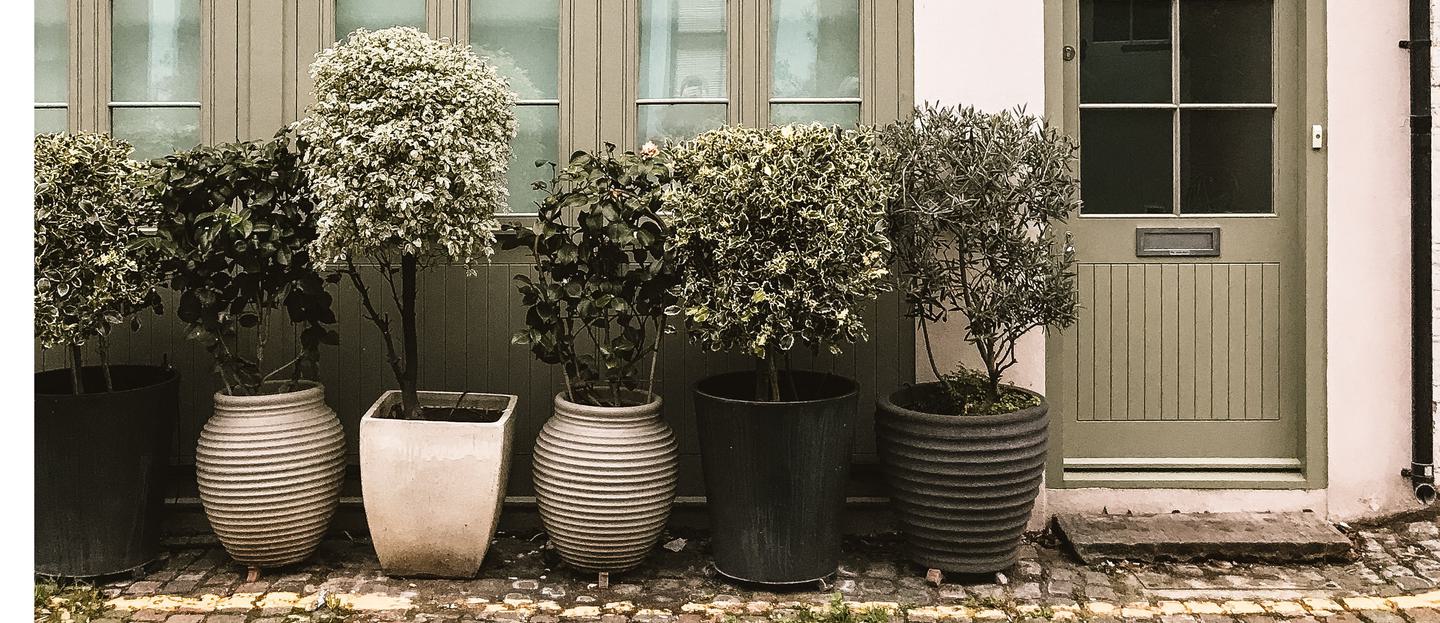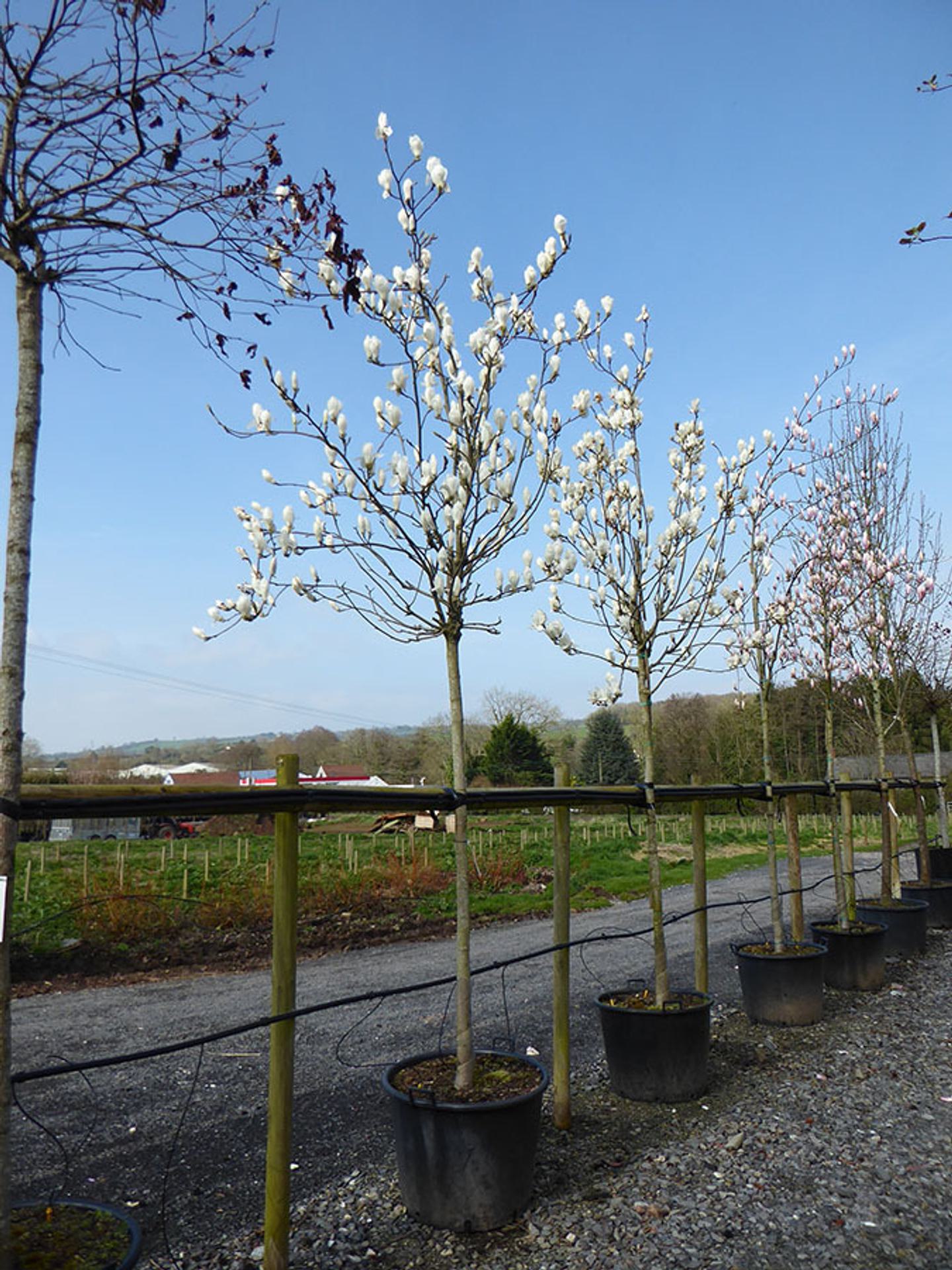Guides
Keeping trees and shrubs in pots
A pair of clipped shrubs either side of a front door give a formal air to an entrance; a patio seems incomplete without a few plants in pots; and if you only have a balcony, of course you have to garden in containers. People look around our nursery and see that even trees of 20 foot can be kept in containers. Amazing, eh?

Yes, you can grow trees and shrubs in containers, but be aware that they won't live anything like as long as they would in the ground, even if you pot them on into increasingly large containers. And it requires a lot more input than planting them in the ground. For example, those tall trees are hooked up to an irrigation system that may supply them up to 30 litres of water a day! Nor is it just about watering - here are our top tips if you need to keep your plants in a pot.
Choose small and slow-growing
Large, vigorous things will outgrow the container quickly, require a lot of water and nutrients and prove difficult to keep upright. Slow growing options include box, hollies, compact conifers, Japanese maples and lauristinus. More ideas here.

Use large containers
Small containers dry out more quickly, fall over more easily and constrict roots. Anchoring top-heavy young trees in pots is tricky, so you really need a deep container to attempt this feat. If space allows, substantial planters are the best bet. Bear in mind that most trees and shrubs want to send roots down between 30 and 60cm, at least.
Work out how to contend with wind
At the nursery, most things are tied into a system of rails and posts so they don't blow over. Even this isn't foolproof!
Animals can also topple your pots, be aware.

Never let them dry out (or drown)
This can be fatal, and is the number one cause of death by pot-growing. Plants in pots are usually exposed to more warmth and wind than those in the ground, so are at high risk of drying out. You may need to water every day in spring and summer, so don't forget to employ a plant-sitter before you book your holiday!
Unfortunately, rain doesn't tend to get into pots in the volume required. Water heavily rather than sprinkle, incorporate water-retaining granules and use a mulch on top of the pot if possible. Make sure your pots also have good drainage.
Feed
Many trees and shrubs, especially evergreens which are growing all year round, will use up the nutrients in a pot over the course of a season, so these must be replenished with liquid or slow release fertilisers. Apply in spring and/or summer, according to packet instructions. Signs of nutrient deficiency include small or mottled leaves and poor growth. Using soil-based compost will help to retain and release nutrients as required.
Protect in winter
If pots freeze during winter, roots may be damaged and pots may even break. Fleece or bubble wrap may be used to protect susceptible containers.
Tackle pests
Pests including vine weevil, slugs and snails can munch away at roots or leaves. They hide inside and under pots. Severe infestations may require action.
Consider growing in the ground
When your plant gets too big for a container, or you find the maintenance too taxing, it's time to move your tree or shrub into the ground. If the roots are already tangled and pot-bound, it might be too late, but if there's a nicely branched root system which can be teased out to stop it circling, your plant may enjoy a future in the soil, its feet will be free to roam through the wide expanse of cool and nutritious earth!
If you can avoid growing in pots, we honestly recommend you do. We don't want to sound negative, but after all the effort we've put into growing healthy plants, we want them to have a good, long life after they leave the nursery. Pots inevitably limit lifespan, but of course we understand that some plants are destined to be kept in them. Choose wisely and keep up the maintenance and they should thrive at least for a few years.